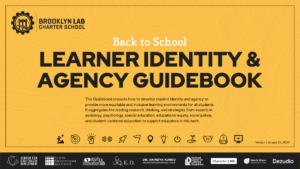6 Tips for Student Motivation

Daniel Pink (@DanielPink), author of Drive about the science behind motivation, is out with a new book called To Sell Is Human: The Surprising Truth of Moving Others. Here are 6 powerful tips gleaned from his recent webinar on motivation and persuasion.
1. We are all pitching. Anytime you pitch anything (an idea, a product, a way of life), you are selling something. For students, this means if you want to change something (anything), at your school, at home, or in your community, it’s important that you know tactics and strategies that are most effective. We all spend time, effort and energy in persuading others. Most pitches should not be attempted conversions; they should be viewed as opportunities to collaborate. Researchers at University of California Davis and Stanford University teamed up to test this and found that effective pitchers draw in their catchers and make them feel like a part of the pitch. It turns out passion is a strong predictor of success in any kind of persuasion pitch, but so is one’s ability to build and coalesce a team. Teaching students the art of collaboration and team building is really effective and important in change theory, pitching ideas, and getting things done.
2. Buyer beware? Not anymore. In years past, when it came to selling something, there was information asymmetry. The seller had more information than the buyer, putting the buyer at a disadvantage. These days, with information at our fingertips, we are in an age of information parity. The buyer and the seller have the same information. The same is true in schools. We are no longer in an age where the teacher has more access to information/content than the students. The democratization of content is perhaps the biggest change we have seen in education in the last 20 years. It’s no longer about who has access to the content, it’s about how we use the content and can demonstrate critical thinking skills, make connections to seemingly unconnected connect, and internalize content.
3. The importance of clarity. Yes, we live in the information age, where everyone has access to information. Students, teachers, adults: can you make sense of the information? Can you get rid of the noise? Can you be discerning about the types of information coming your way? Here’s the premium, and we can teach this to our students: we have to move beyond problem solving to identifying what the problems are and actually anticipating them in advance.
4. Listen. In conversations, are we teaching our students to pause 2 seconds before speaking? Research tells us that listening is a skill that should not be assumed, and should be taught (it’s also part of college and career readiness standards). You are more likely to be heard and to actually learn from others, if you, surprise, LISTEN, instead of thinking of your response.
5. Behavioral science is cool (kids dig it). Questions abound in behavioral science and here are a few Daniel Pink gave the audience (as a teaser to his new show about using science to change behavior on National Geographic beginning in November):
- Can we get people to take stairs instead of escalators? (YES! Turn stairs into Beat Boxes.)
- Can we get people to stop double dipping in guacamole? (Jury’s out on this one!)
- Can we get more people to wash their hands if we pump lemon scent in baseball stadium bathrooms? (Turns out the answer is YES!)
Sounds like a great combination of employing design problems with design thinking strategies and using behavioral science/inquiry to test hypotheses and go through the scientific method, all with fun topics that students could find compelling and engaging.
6. And finally, if all else fails…there’s this. Yes, sometimes we have ideas that are rejected or we (gasp!) face failures of one kind or another. To the extent that we can teach our students to be “buoyant” (Pink’s word for persistence), the better off they are in the face of obstacles. How are we modeling this to our students? How can we show them that failures are ok (or maybe even awesome)? The key here is to illustrate to students that they can learn from their mistakes, become flexible and nimble, and rebound quickly. Psychologist Martin Seligman has researched this and teaching students (and adults) learned optimism in the face of (you guessed it) failures.
The webinar was a benefit for Big Picture Learning, a national network of schools that Daniel Pink supports because of their emphasis on real world, project based learning and college and career readiness. Participating in webinars, joining online conversations and keeping up with reading are all good ways to expand the knowledge and experience you bring to your practice.
For more on mindset, see Innovation Mindset = Growth + Maker + Team Experiences.
For more on guidance, see Core & More: Guiding and Personalizing College & Career Readiness.





0 Comments
Leave a Comment
Your email address will not be published. All fields are required.